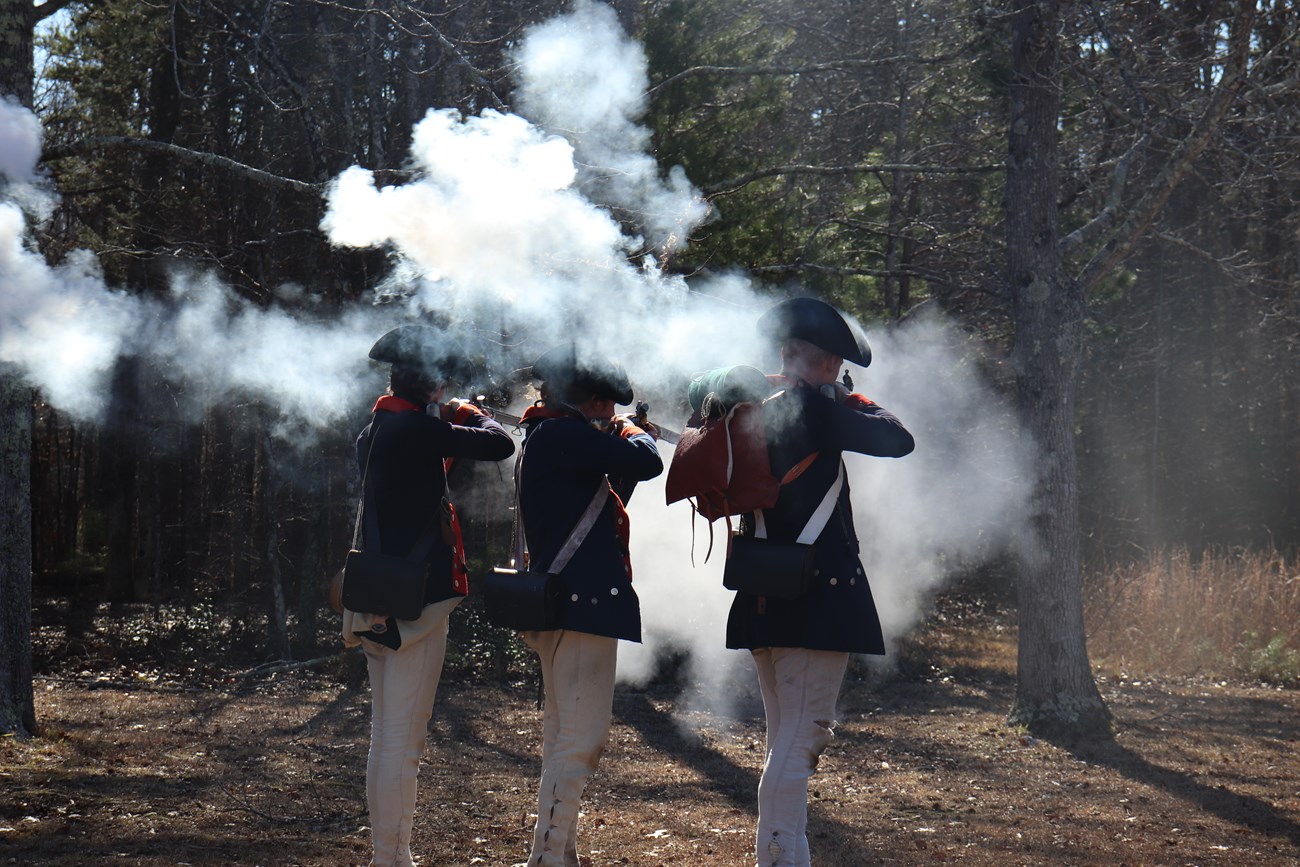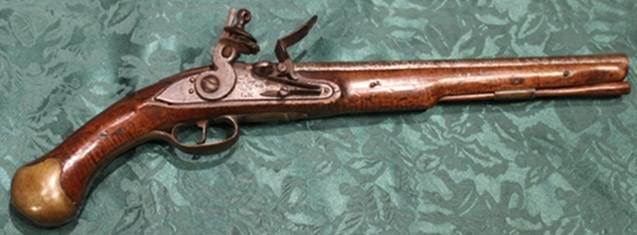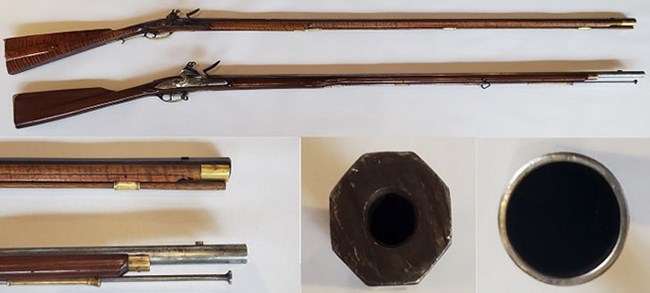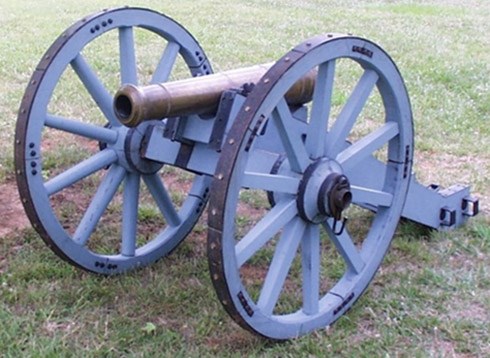Last updated: February 22, 2024
Article
Black Powder Weapons of the Southern Campaign

NPS Photo.
Dragoon Weaponry

NPS Photo.
Pistol
Pistols were an important cavalry weapon and often in short supply for both British and American Dragoons. Generally, pistols were .56 to.72 caliber with 9” to 14” barrels and had a very short accurate range. Used for close combat, pistols were normally sheathed in a holster and mounted from the pommel of the saddle for quick access. British, American, French, Dutch, and German models were used by both sides during the war.
NPS Photo.
Carbine
British and American Light Dragoons were normally armed with a dragoon carbine. Artillery units and light infantry were also issued carbines. Shorter than the traditional infantry musket, carbines typically fired a .62 to .72 caliber musket ball with an accurate range of around 75 to 150 yards. Light Dragoon carbines were generally slung over the shoulder and attached with a leather strap that made them easier to carry when riding, dismounting, and firing. British, French, American, Dutch, and German models were used by both armies. Both armies struggled to acquire carbines and some units usedcut-down or shortened infantry muskets.
NPS Photo.
Standard Weaponry
Rifles and Muskets
The flintlock rifle was primarily a civilian weapon that saw service throughout the war. As a civilian weapon, there were many different varieties. Their key feature was the rifling grooves in their barrels which were designed to spin the bullet as it exited, improving range and accuracy. Some highly skilled riflemen could hit targets at 300 yards. However, rifles were expensive to produce and required nearly a full minute to reload.
The smoothbore flintlock musket was the standard infantry weapon of the American Revolution. The most common versions of this weapon were the British Land Patterns, commonly known as the Brown Bess, and the French Charleville.
However, large numbers of Spanish, Dutch, German, and American muskets were used as well. They usually fired a .69-.75 caliber musket ball, accurately at a range of 75-150 yds, and could be fired 3-4 times a minute.

NPS Photo.
Artillery
Grasshopper
Jan and Pieter Verbruggen transformed British artillery production in 1770 with the mass production of the 3-pounder “Grasshopper” cannon. The cannon had an effective range of around 800 yards and fired solid shot or anti-personnel rounds like grape shot, and cannister shot. Light weight and maneuverable, they were sometimes embedded with infantry units for close combat support.
98 Verbruggens were produced and shipped to the American Colonies during the American Revolution. Many were captured from the British and used by American forces.

NPS Photo.
Swivel Gun
A Swivel Gun is a small cannon, with a bore diameter of about 1 ½ inches and mounted on a rotating stand. A handle attached to the breech of the gun allowed control and the ability to quickly change the direction of fire. These weapons fired many types of projectiles, such as shot, canister shot, and grapeshot. Swivel guns, with their smaller size and lighter weight, could be moved to areas where larger artillery couldn’t go. In inaccessible areas, these guns were primarily used from fortified positions against enemy infantry.Tags
- cowpens national battlefield
- kings mountain national military park
- ninety six national historic site
- overmountain victory national historic trail
- cowpens national battlefield
- kings mountain national military park
- overmountain victory national historic trail
- ninety six national historic site
- black powder weapons
- muskets
- cannon
- swivel gun
- flintlock
- 18th-century weapons
